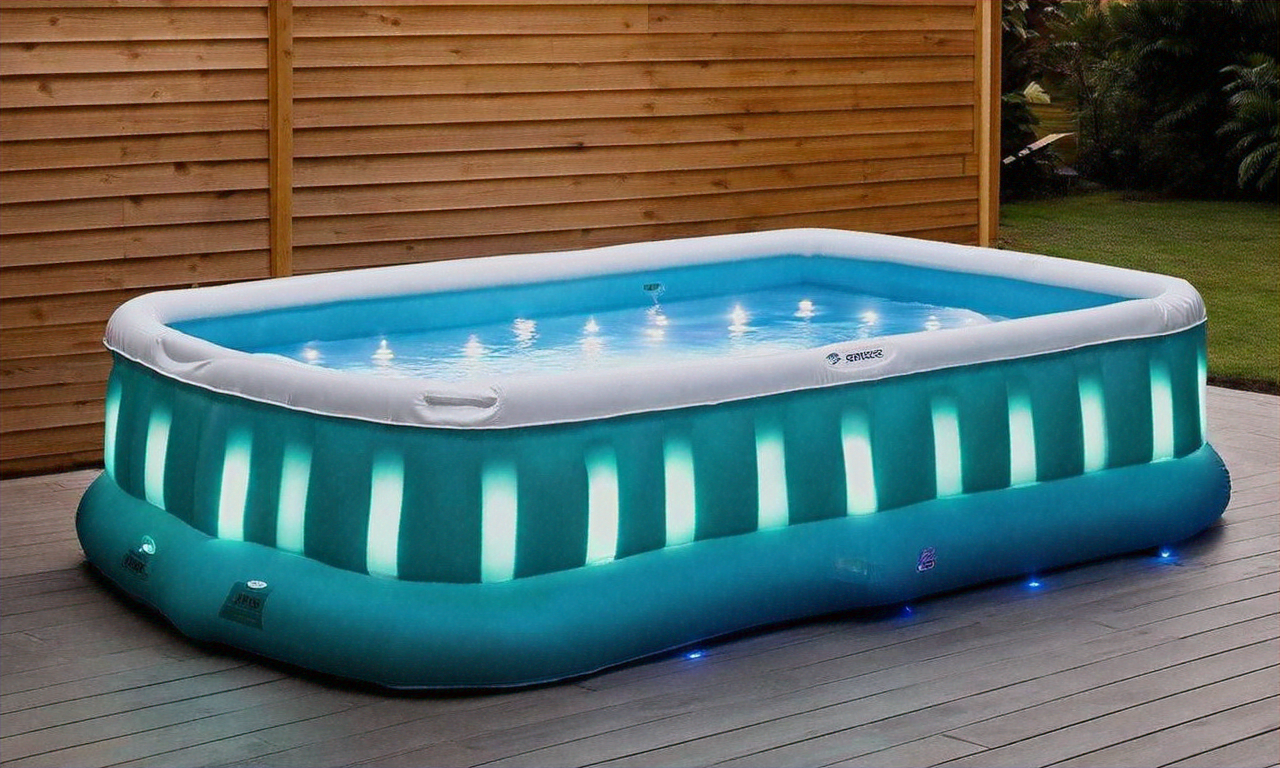Backyard Inflatable Pools: Create a Cool Summer Retreat
Inflatable pools offer an inexpensive, moveable solution for backyard cooling and family fun without permanent installation. This comprehensive guide explains safety features, setup tips, water maintenance and conservation strategies, storage and winter care, plus cost comparisons to help you select and care for the ideal inflatable pool.

Key safety and durability features to prioritize
When choosing an inflatable pool, start by evaluating build quality and safety elements. Look for heavy-duty, puncture-resistant PVC or reinforced vinyl and products designed with multiple independent air chambers so a single leak won’t collapse the entire structure. Reinforced sidewalls and textured, non-slip floors improve stability and reduce slips and tears. Practical conveniences such as integrated drain valves speed up emptying, and many family-sized models are compatible with filter pumps to maintain clearer, healthier water.
Check that the pool meets applicable safety certifications and review the manufacturer’s weight and depth specifications to ensure the pool suits your household. For homes with toddlers, favor shallow pools with sturdy sidewalls, clear maximum-occupancy guidance, and explicit supervision instructions from the maker.
Best practices for setting up your inflatable pool
A careful setup preserves the pool and keeps users safer. Place the pool on a flat, even surface; while grass is common, a purpose-made pool pad or a thick tarp beneath the pool protects the bottom from stones, roots, and debris. Clear the area of sticks, rocks, and sharp objects before inflation.
Inflate each chamber according to the instructions, aiming for even pressure across all sections so the pool retains its intended shape. If the model accepts a filter pump, hook it up as directed to promote circulation. Once filled, test the pool’s stability and inspect for leaks before allowing children or larger groups to enter.
Ongoing maintenance for sanitary water
Routine upkeep keeps water safe and reduces the need for frequent total water changes. Use appropriate sanitizers and pH-balancing chemicals, checking levels with test strips or a kit to stay within recommended ranges. Skim daily or every other day to remove leaves and bugs, and consider a small cartridge or sand filter to trap floating debris and suspended particles between changes.
How often to drain depends on usage and maintenance: many owners find a full drain and refill every two to three weeks works well if they run a filtration system and maintain chemical balance. Less frequent use combined with reliable filtration and chemistry can stretch that interval. Always adhere to manufacturer instructions and local water-safety advice.
Saving water and minimizing environmental impact
Inflatable pools can require large volumes of water if refilled often, so adopt conservation habits where you can. Use a fitted cover when the pool isn’t in use to reduce evaporation and keep debris out. When draining, repurpose the water to irrigate ornamental beds or to pre-wet the lawn, but first confirm local watering rules to ensure compliance. Portable pumps with shut-off valves and hoses with flow control can limit waste during emptying.
Choose eco-friendlier sanitizers when suitable, and avoid dumping chlorinated water onto sensitive plants. Maximizing filtration and maintaining proper chemistry extends the time between drains, lowering overall consumption and reducing environmental impact.
| Pool Type | Capacity | Average Price Range |
|---|---|---|
| Basic kiddie pool | 1–2 children | $15–30 |
| Family ring pool | 4–6 people | $40–100 |
| Rectangular frame pool | 6–8 people | $150–300 |
| Premium frame pool | 8–10 people | $300–600 |
Prices, rates, or cost estimates mentioned in this article are based on the latest available information but may change over time. Independent research is advised before making financial decisions.
Storage, off-season care, and winterizing tips
Properly storing your inflatable pool after the season extends its usable life and prevents mold, mildew, and material breakdown. Begin by thoroughly cleaning the interior with a mild pool cleaner or a diluted bleach solution, then rinse thoroughly. Allow the pool to dry completely; any trapped moisture can cause odors and accelerate material degradation.
Fold the deflated pool according to the manufacturer’s recommendations, avoiding tight, sharp creases that can stress seams. Store the folded pool in a cool, dry place away from direct sunlight, rodents, and sharp items. Using a storage bag or a sealed container designed for inflatables adds extra protection against pests and accidental punctures.
If you live where temperatures drop below freezing, drain and store the pool before the first freeze. Frozen water expands and can warp or burst seams, damage valves, and otherwise render the pool unusable.
Choosing the right pool for your lifestyle
Inflatable pools provide a flexible, cost-effective option for renters, families seeking seasonal recreation, or anyone looking for a quick way to beat the heat. When selecting a model, weigh material quality, capacity, included accessories (covers, pumps, repair kits), and the realistic time you’ll commit to upkeep. Think about where you’ll place it, how many people will regularly use it, and whether you want add-ons like a filter or a canopy.
With a smart purchase and regular care—confirming safety features, siting the pool on a safe surface, keeping water chemistry balanced, and storing it properly—you can get many summers of enjoyment. Inflatable pools are an affordable, portable means to create a refreshing backyard retreat that serves the whole family when maintained responsibly.






